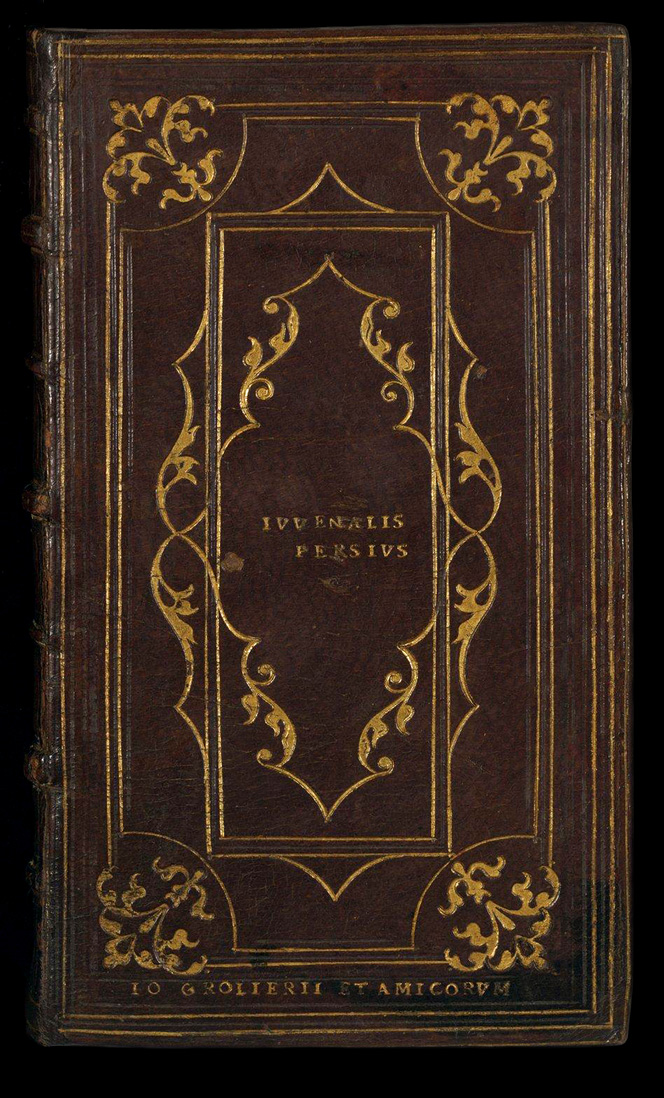

|
The world was unaware of Jean Picard's important role in the history of French decorative bookbinding, until 1989 when Anthony R. A. Hobson demonstrated that many of the bindings previously attributed to the kings binder, Claude Picques were in fact made by Picard.
(Hobson, Anthony R, A and . Humanists and Bookbinders : the origins and diffusion of the humanistic bookbinding. Cambridge: University Press, 1989). This startling discovery has made the previous study and classiifcation of the decorative tools from this period by Nixon in 1965 nearly obsolete. Nixon was one of the first to catalogue rubbings of the imprints found on the Grolier bindings mid 16th century. Many of which he attributed to Picques. Just recently I was asked about a binding from this period, the question was whether the imprints were those of Picard or Picques. This set me off researching all of these imprints once again, and now after many frustrating hours looking at blurry rubbings and low resolution photographs, I have decided to start all over again at the beginning, in an attempt to sort out Nixons imprint catalogue. Here we will look at some early imprints from the tools of Picard, in high resolution, so that at last we will be able to identify with greater certainty the more important imprints, many of which are found on the majority of Picard's bindings. |
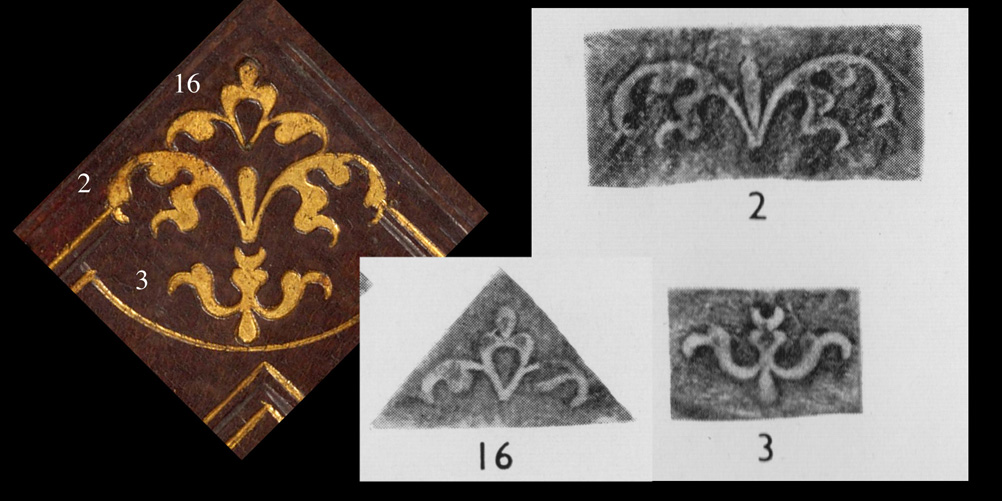
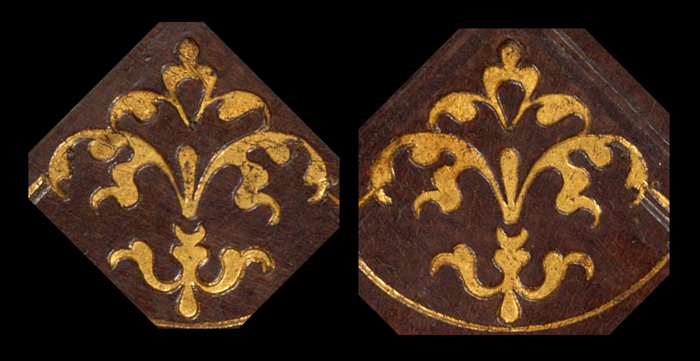
| Fortunately the imprints on this binding (shown at the top pf the page) are exceptionally clear and sharp, which is the main reason I have chosen this example. I have borrowed this reproduction from the Bibliotheque Nationale site where you will find a full description of this binding and photographs that can be enlarged.You might wonder what is the importance of these particular imprints. It turns out that a number of important binders from this period have nearly identical copies of these tools and they often use them in the same way i.e. corners. Here is the main way to sort out a lot of binders, if you can get a good high resolution imprint, you can spot differences even in imprints that are very very similar, not forgetting that any imprint can vary an enormous amount, you can see differences in the imprints in Comparative Diagram 2 even though made with the same tools, however they cannot be larger or smaller, size is the first way to eliminate a doubtful imprint. |
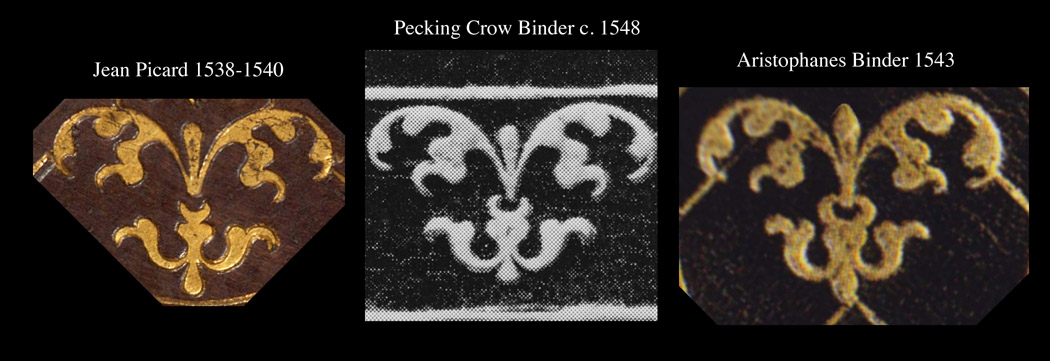
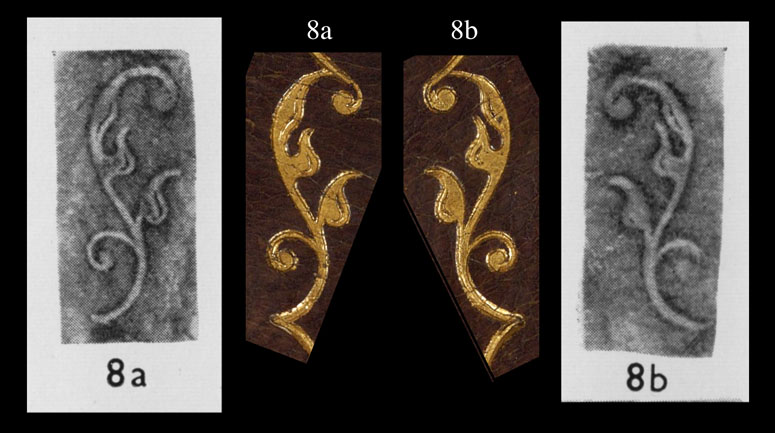
| In Comparative Diagram 4 we see actual imprints verses rubbings, however please notice that I have simply extracted these imprints from the binding without trimming the overlapping or attached fragments of the surrounding imprints, in the rubbing we see only the actual imprint. When our collection of imprints is nearing completion we can collect them in a catalogue at which point I will trim or remove virtually the obscuring fragments. What we are primarily concerned with here is being able to identify the main shape and size of the imprint. The rubbings give an accurate scale of size which is matched by actual imprints enlarged to 600 dpi. |
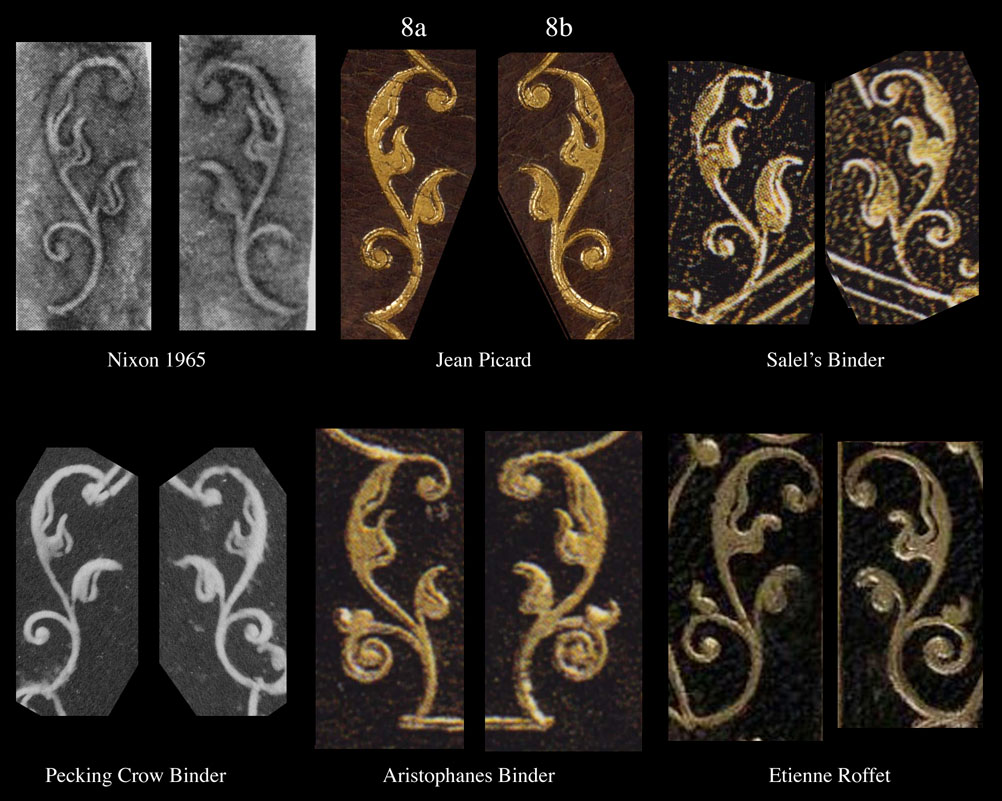
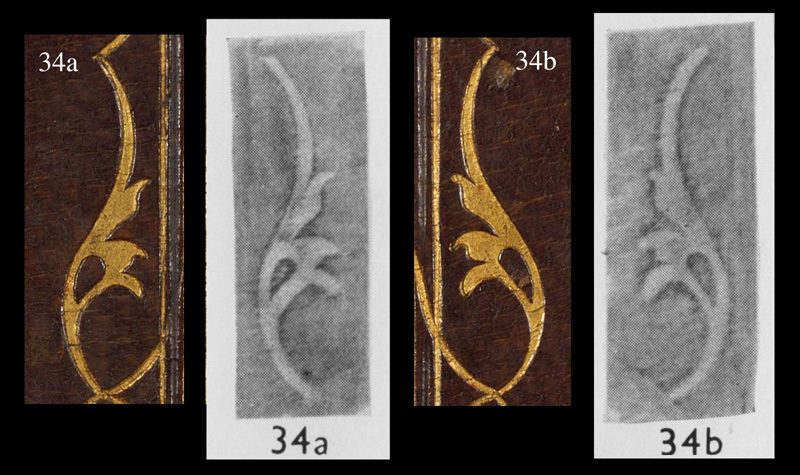
| information about the author | return to the home page of VIRTUAL BOOKBINDING |